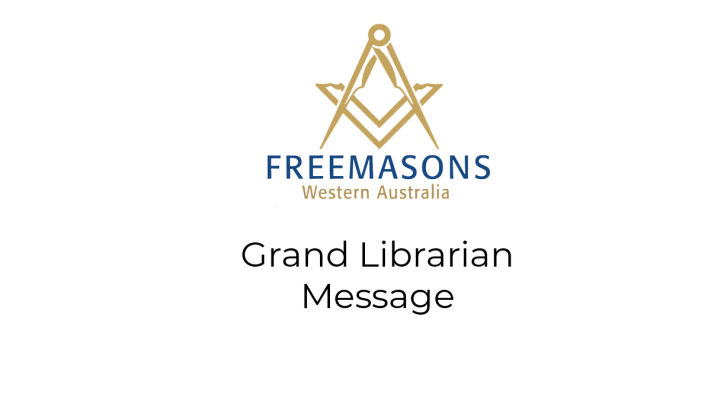
Grand Librarian Message August 2023
Book review (July 2023):
The title” “Shakespeare, Creator of Freemasonry”
Author: Alfred Dods (PM)
Publisher: Rider, & Co, London; edition 1933
GL Reference: A5.8
Reviewed by: Ernst Krauss
Shakespeare is known and renowned across the World as one of the greatest English poets and creator of modern drama and the art of the Theatre. Many a mystery surrounds this illustrious figure, reaching from some people questioning if Shakespeare was a real person to those that look for hidden messages and political statements in his sonnets, comedy and tragedy that are couched in exquisite words and eloquent poetry. You may have wondered yourself about some of the stories surrounding the Bard and his prowess in creating theatrical poetry and the volume of work that he left for the world to enjoy.
Alfred Dodd was a Freemason who was intrigued by many questions that surround the Craft. He dedicated a large period of his life to researching not only the origins of Freemasonry but also the origin of the Rituals. To his mind, the modern ritual practised in today’s English Freemasonry was not created in 1717 when the first English Grand Lodge was formed, or at the time of the issue of Dr. Anderson’s Grand Lodge Constitutions in 1723. Alfred Dodd contends that ritual must have existed long before these formative events, especially if one considers that there is evidence of Lodge meetings in the 17th Century and before. Logically this would be true, as rituals would have been practised in those Lodges, even if we are today not aware of such Rituals. We are persuaded by Brother Dodd that prior to Shakespeare, Ritual was only orally passed on.
It is important to also reflect on the difficult times that England went through after the reign of Henry VIII, not only politically, but also considering the religious turmoil with which the population at all levels had to cope with. Those of the Catholic faith had to virtually go underground or had to renounce their beliefs and religious affiliations. Many accounts about those times describe the formation of groups of people meeting and practising their faith clandestinely. Furthering the progress of science was also still fraught with danger. All these difficulties are highlighted against the background of the reign of Queen Elisabeth I and her successor, James VI of Scotland, and James I of England. Shakespeare produced his great works during the reign of Elisabeth I, who was not favourably disposed to the plays by Shakespeare, favouring some of his contemporaries, namely Jonson, Chapman, Marston, and Marlowe. In this book that is meticulously researched, Brother Dodd draws on many parallels of context and phrases that he noticed in Shakespeare’s poetry through his knowledge of Freemasonry and the Ritual.
We are also introduced to Sir Francis Bacon, whose life Brother Dodd also researched and published a few notable books about, who had a close association with Shakespeare. So much so that other Authors speculate that Sir Francis and Shakespeare are one and the same person. Brother Dodd shows that Sir Francis wrote some Sonnets attributed to Shakespeare and passages in some Shakespearean plays and may have contributed ideas for some of the plays or their characters. Both were, by all accounts, not only contemporaries but also close friends and connected by shared secrets.
Shakespeare was towards the end of the 16th Century completely out of favour at the court, Sir Francis lived for most of his life in an underground existence. It is notable that none of Shakespeare’s works were published during his lifetime. The first printing of the Folio happened in 1623, seven years after his death. Brother Dodd draws our attention to various pages of this first edition of Shakespeare’s works, known as the Folio, where, even at the frontispiece of the Folio and throughout the various passages in plays and Sonnets deliberate word counts inserted by Shakespeare’s fellow poets are shown, mostly resulting in numbers 157 and 287 that have significance as cyphers for Rosicrucians. Some readers may recognise these as an undisputable reference to a secret communications code. That this is possible, is nothing particularly new, even Pythagoras taught his disciples that they can communicate in secret through numbers. Further, the opening page of the Folio does not only contain the number 287, it also shows the letters “B” and “J” (written as was usual at the times as “I”) as a ‘stray’ notation on the page.
Many examples form plays and sonnets reinforce Brother Dodd’s points that Masonry has pre-existed as a truly secret society with links even to the Rosicrucians, elusive still today. Countless references to words and phrases we recognise from the Masonic Ritual are highlighted and encompass elements that are known to Royal Arch Masons and Rosicrucians. Through these connections and associations, we are drawn into the world of secret communications that promoted a divergent view to the customs of the times and the critic that was levied through Sonnets and Plays unto the Queen, Nobility and the politics of the realm and society of the day.
We further learn more about the survival of the secret traditions, finding their way even into Dr Anderson’s Constitutions, where he charges in a little noted sentence: “Learn to read what Silent Love hath writ, to Hear with Eyes”. It is stipulated further that Dr Anderson perpetuated Shakespeare’s Secret Literary School, which can be traced until today in Freemasonry. In his research, Brother Dodd leads us through most of the Shakespearean plays where we find clues and hints about keywords we recognise as part of the Ritual or as Masonic phrases. Brother Dodd suggests that William Shakespeare was the Author of the Ritual we practice today. Through many examples, we are tempted to agree. In Brother Dodd’s own words though, we will never know conclusively.
We also learn about other poets of the day that must have been associated with Shakespeare’s secret society as the many examples cited in the book show, where homages and poems to William by his contemporaries bear masonic symbols, cyphers and make veiled references to Masonic phrases. We are also charged to read twice the words written so that their hidden meaning reveals itself to the initiated and the “Brother of the True Light”.
Was William Shakespeare a Freemason? I am sure you form your own conclusion after reading the book that just may point towards Shakespeare promoting Masonic ideals, possibly as a prominent member of one of the day’s secret societies. Maybe Dr. Anderson’s note in the Second Edition of the Constitutions tells all: “An Expert Brother by the True Light can readily find many useful Hints on almost every page of this Book which others Not Initiated cannot discover…”, which gives new meaning to reading Shakespeare’s works.
WBro David Shearer, PSGD
Grand Librarian
Recent posts

WA Grand Installation Tickets On Sale tomorrow


$30,000 Donated for Cyclone Victims

Appeal for WA cyclone victims
